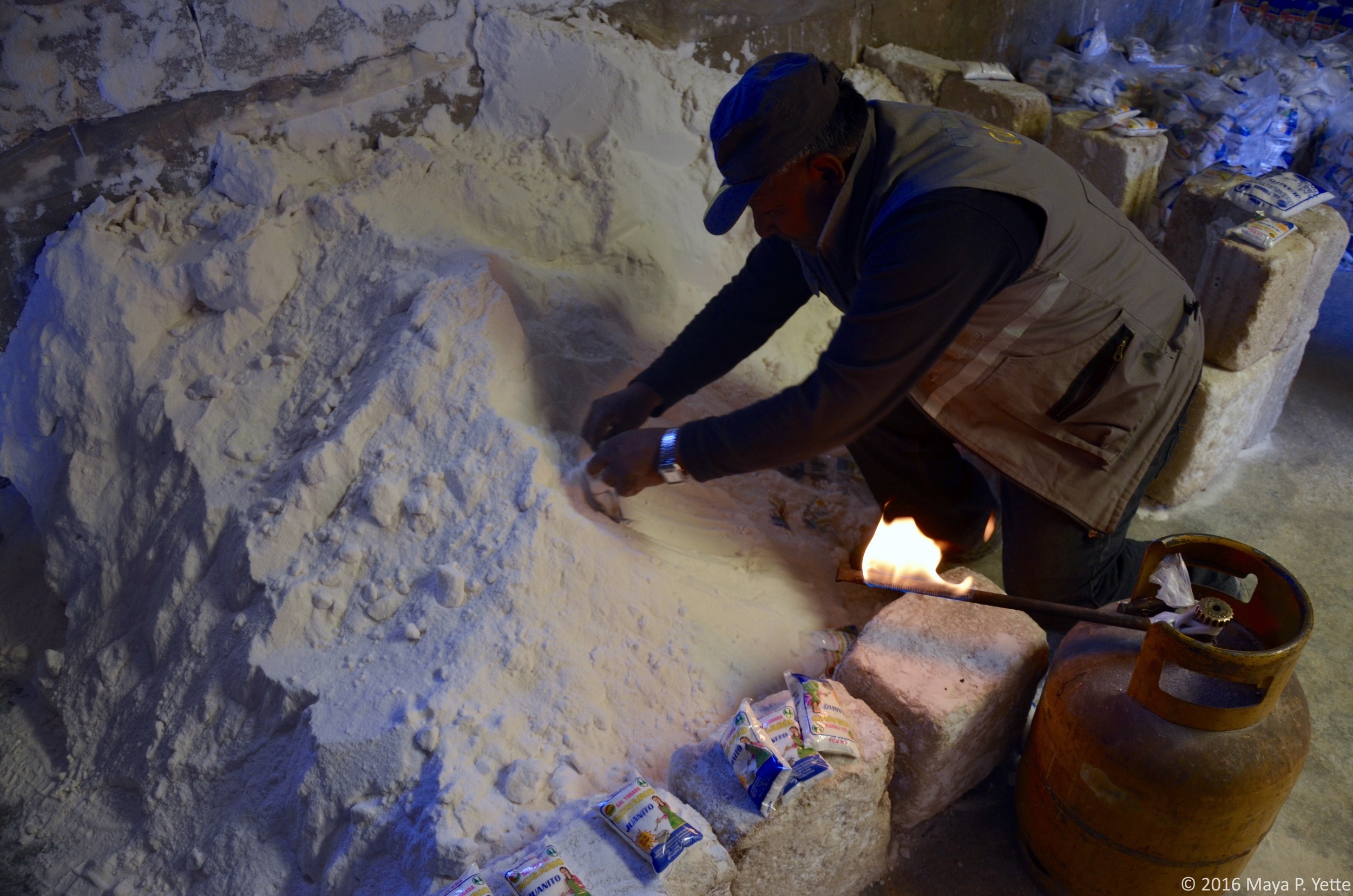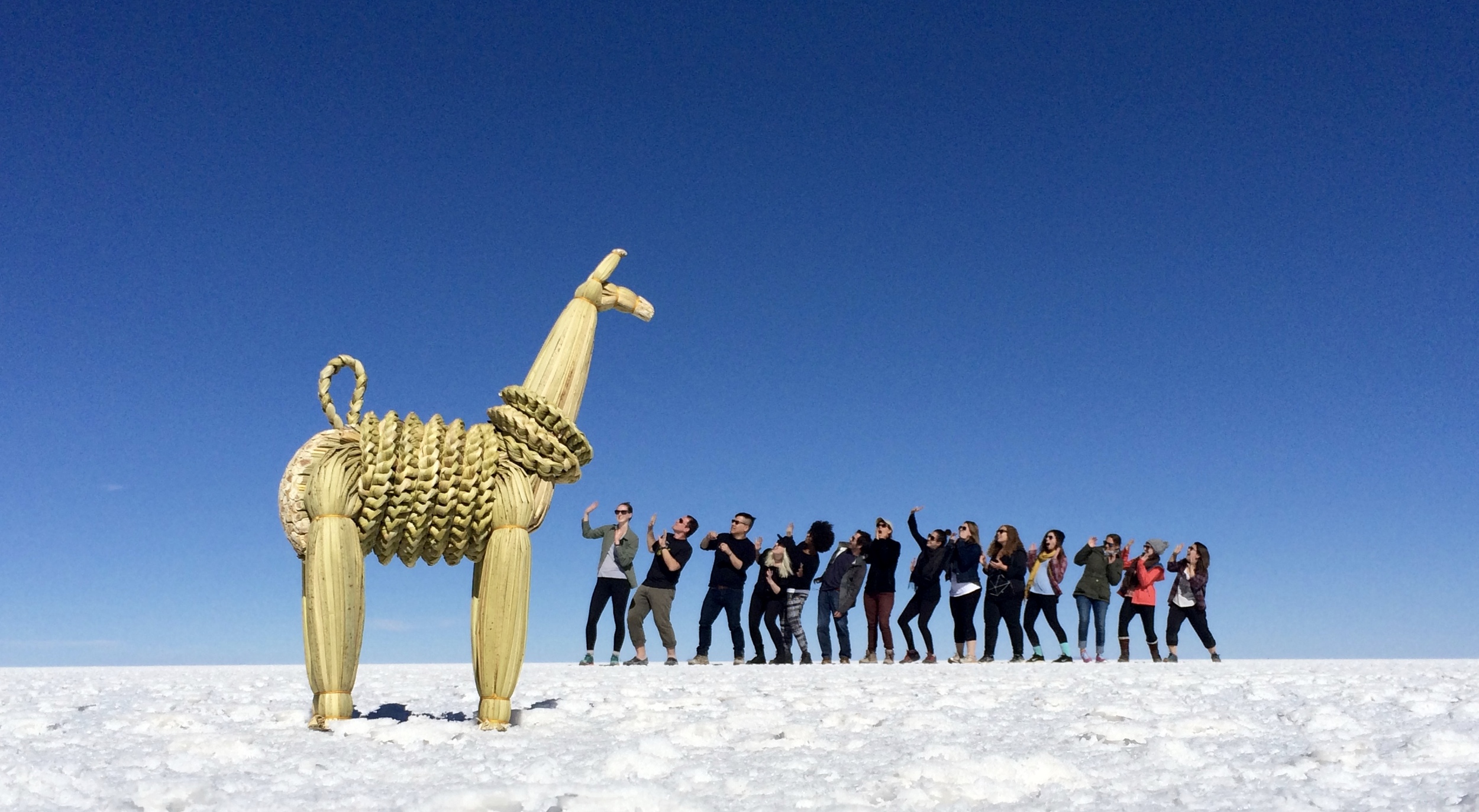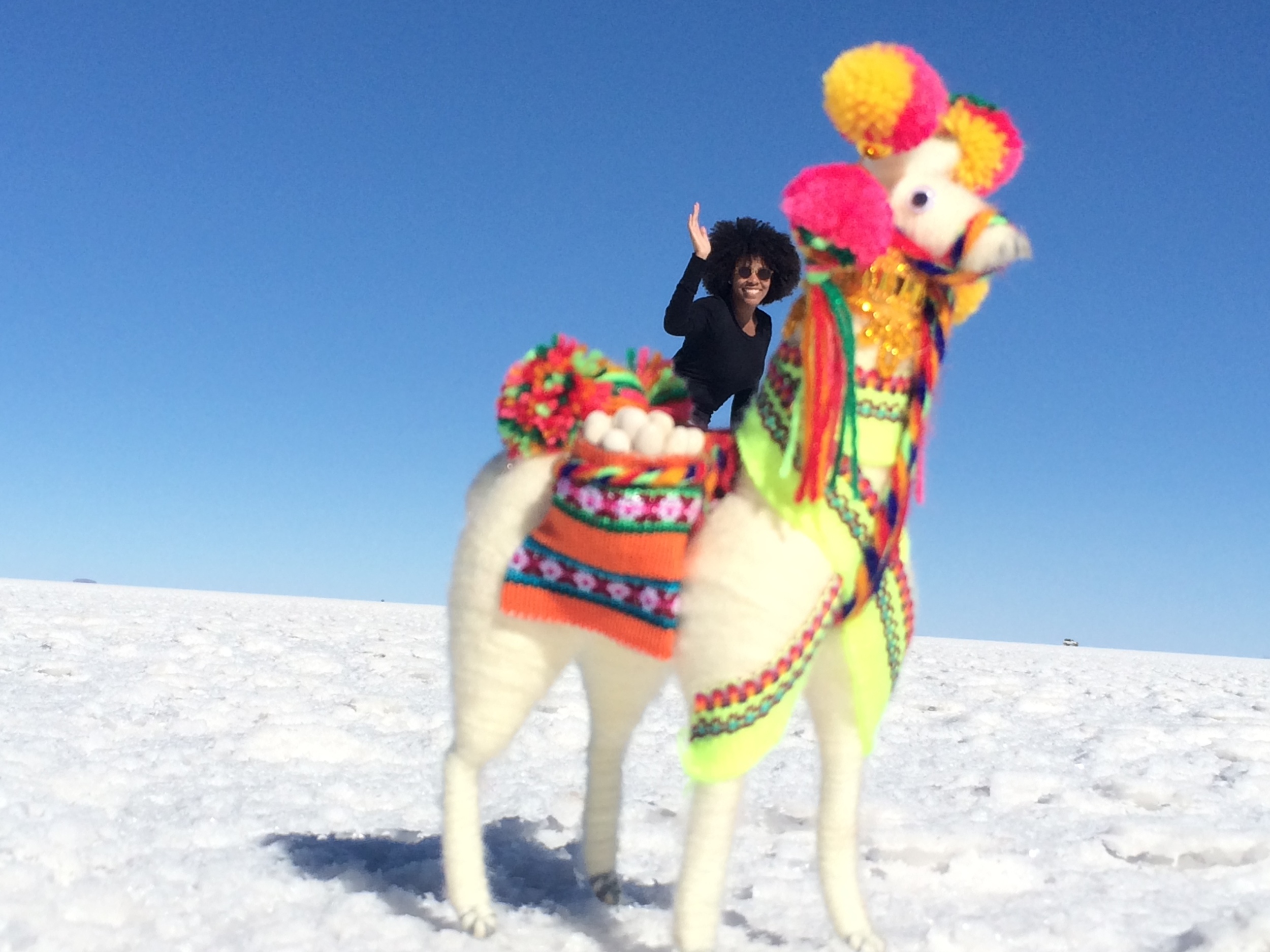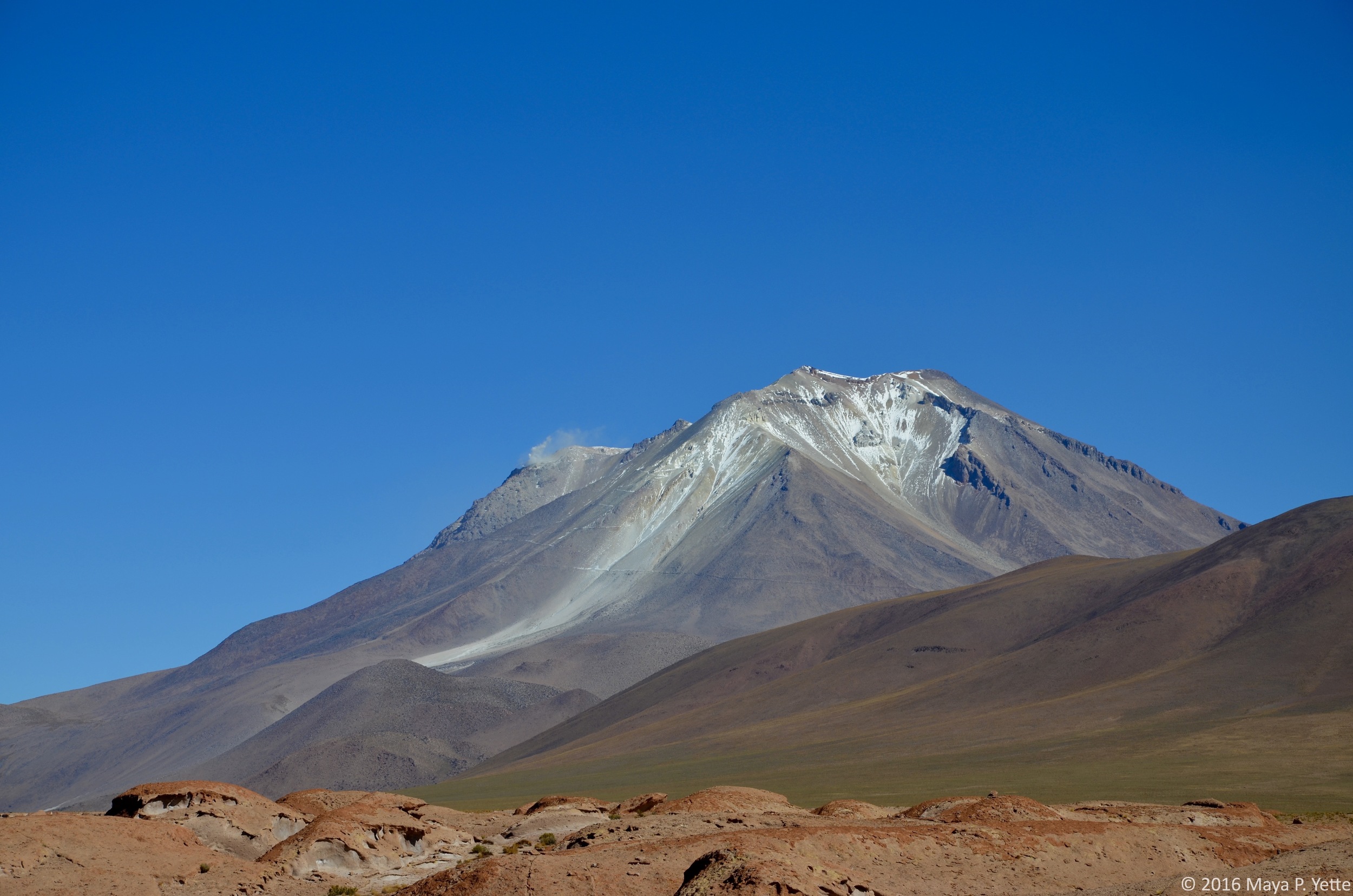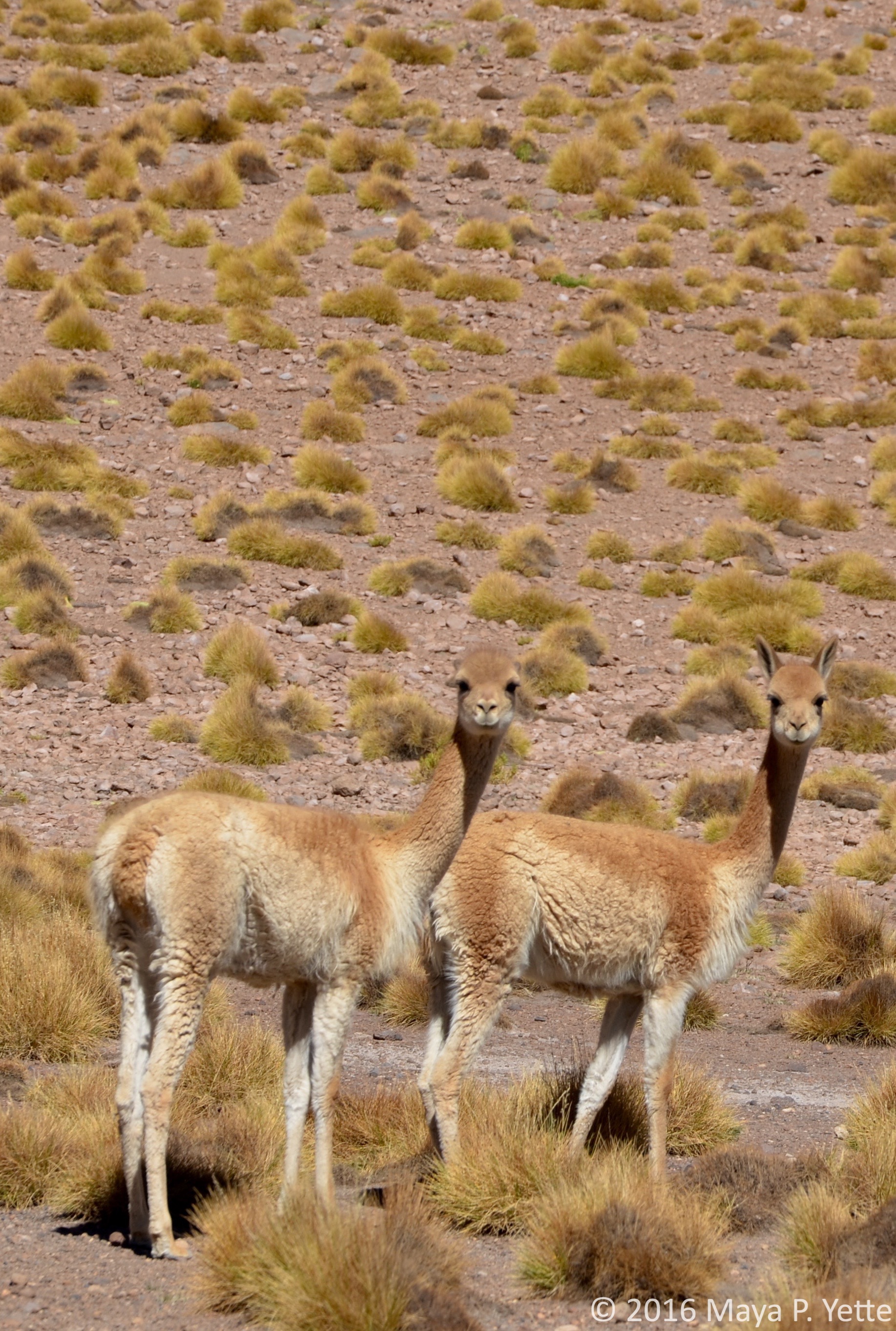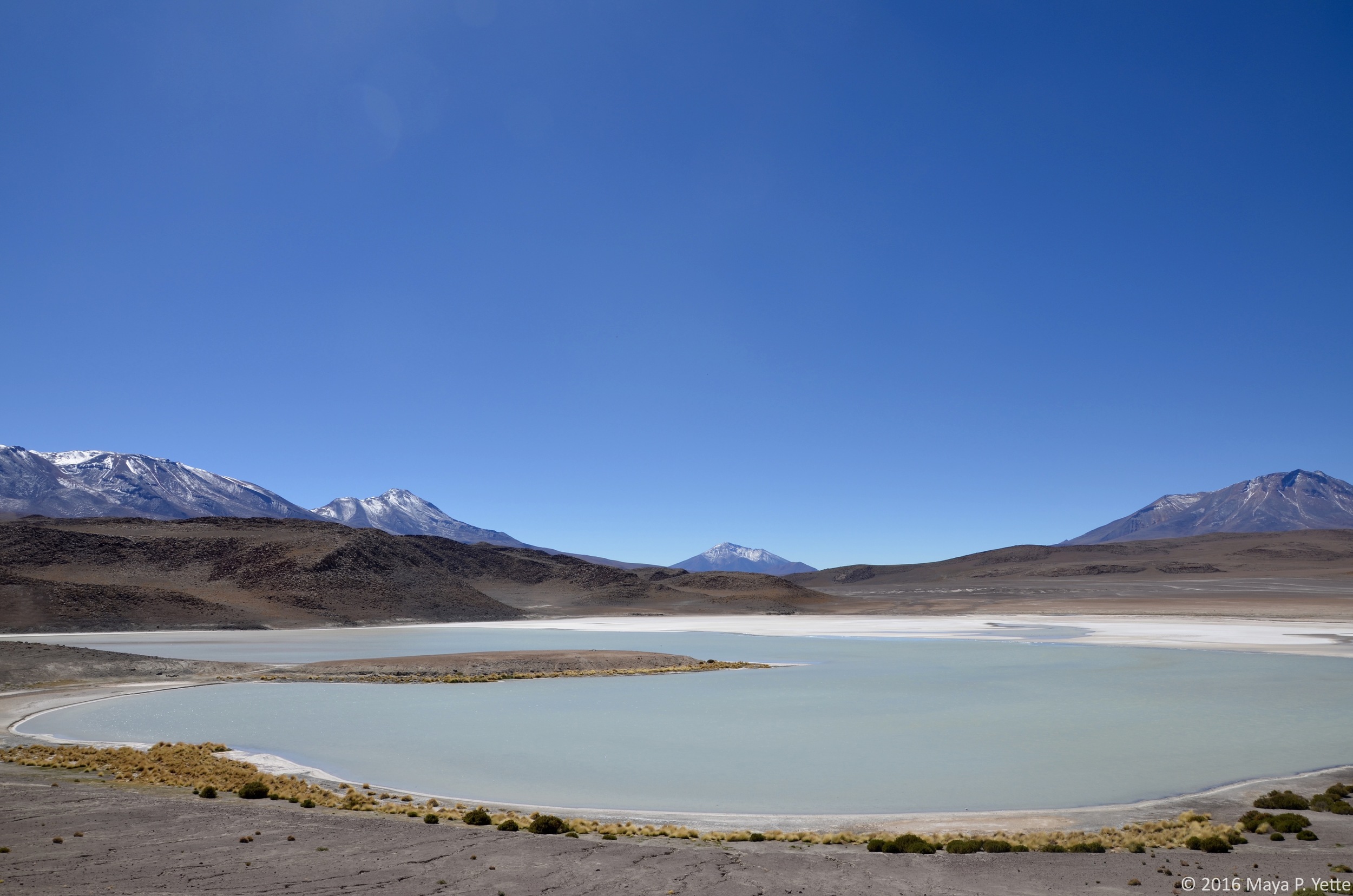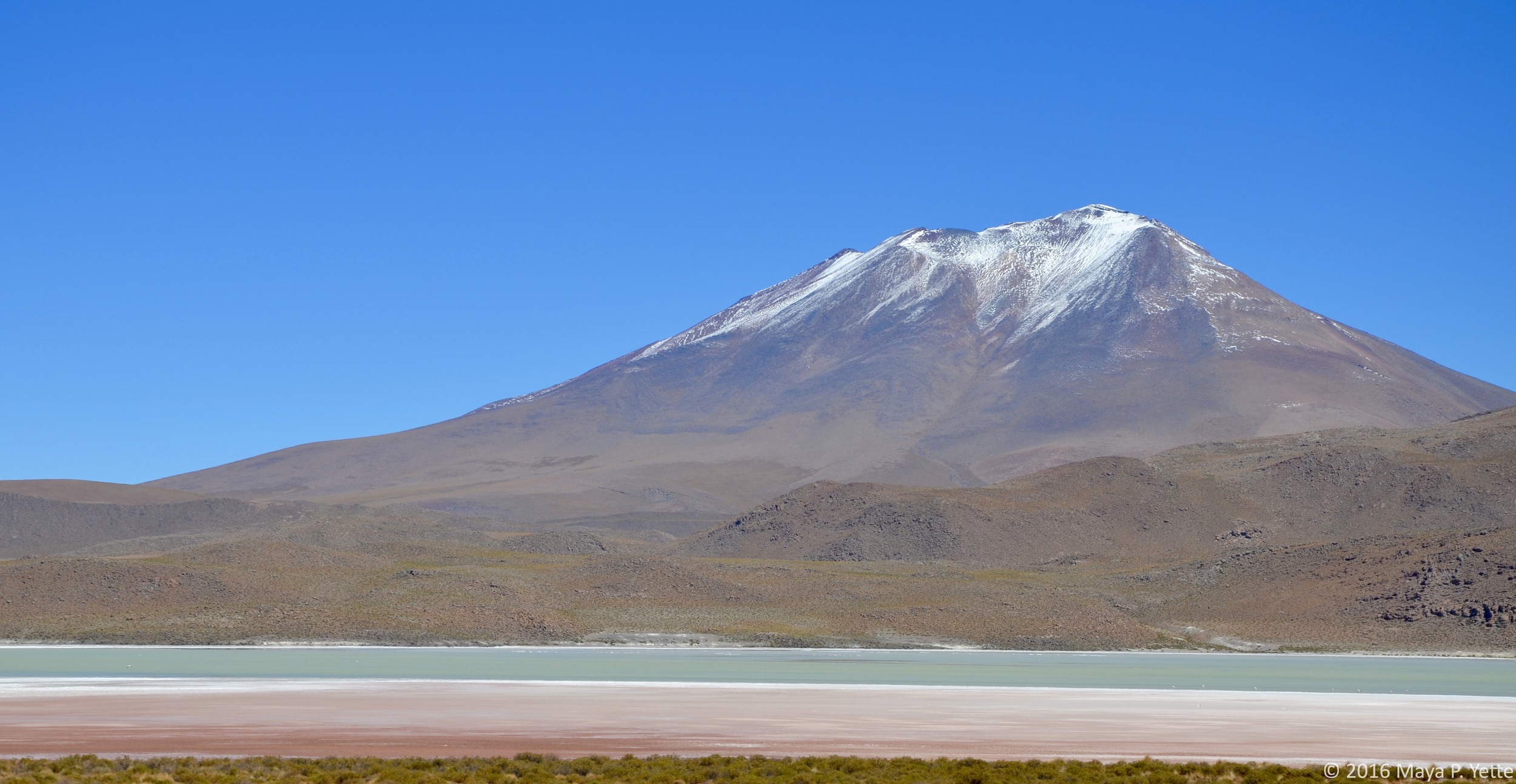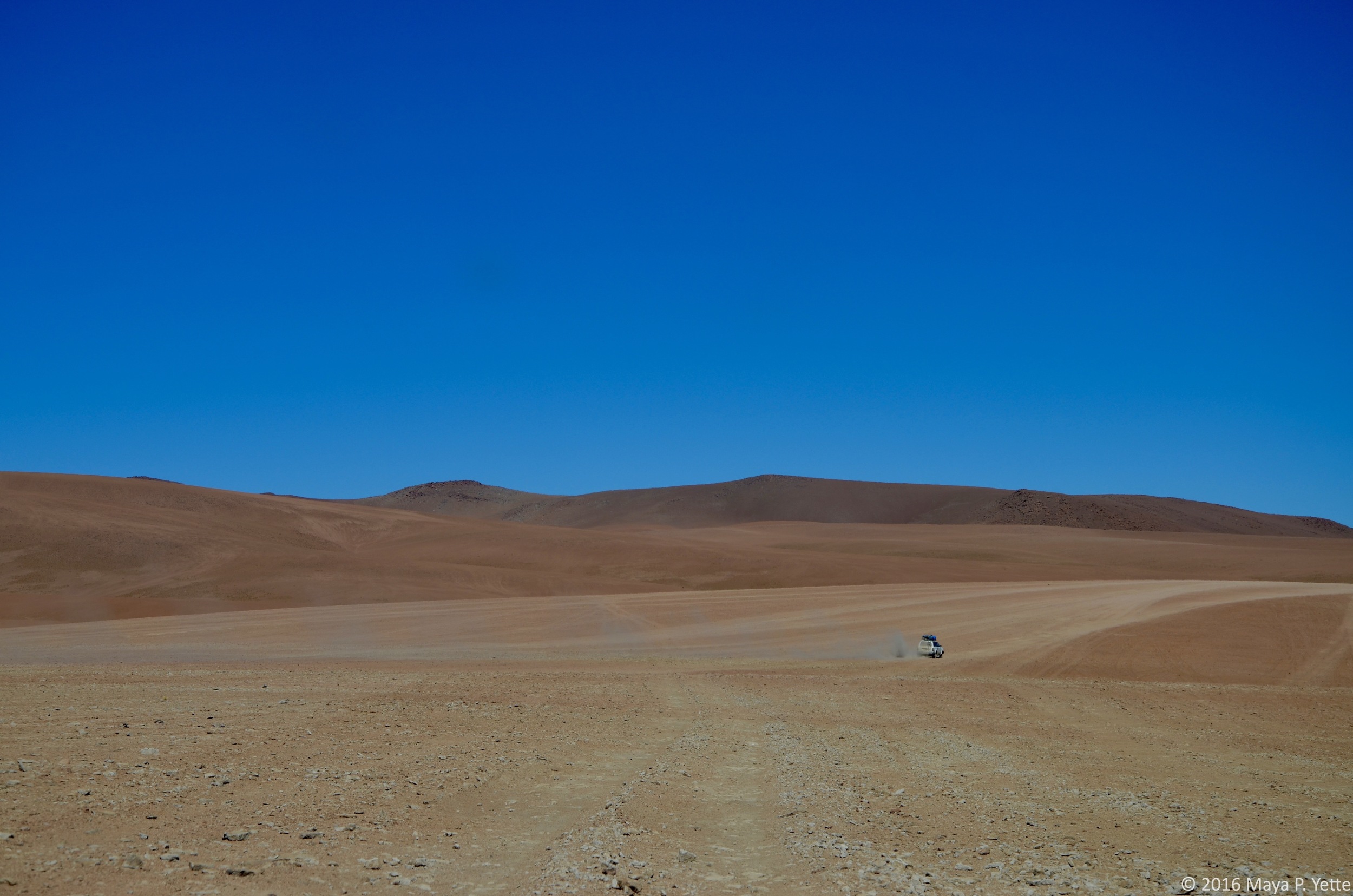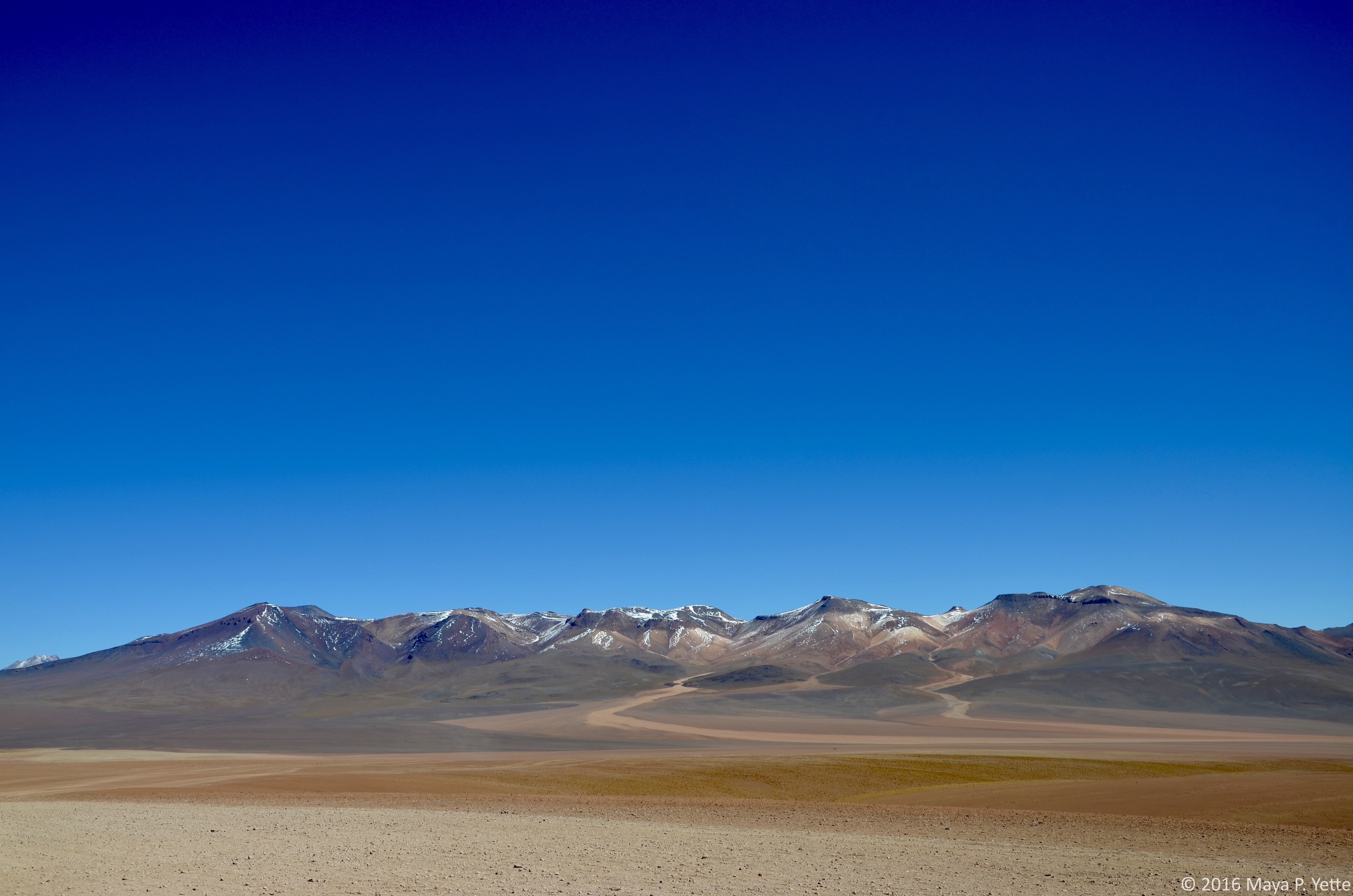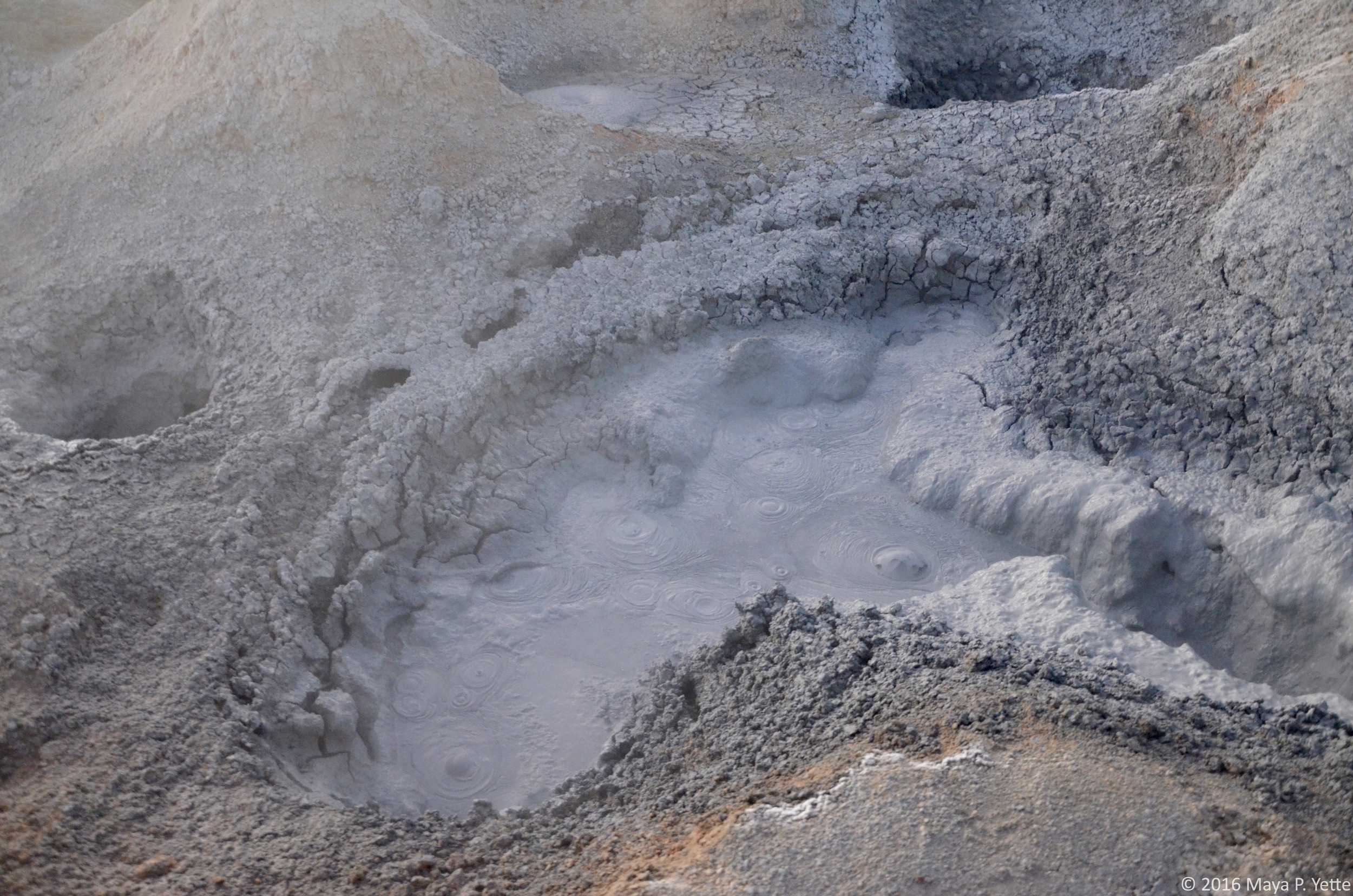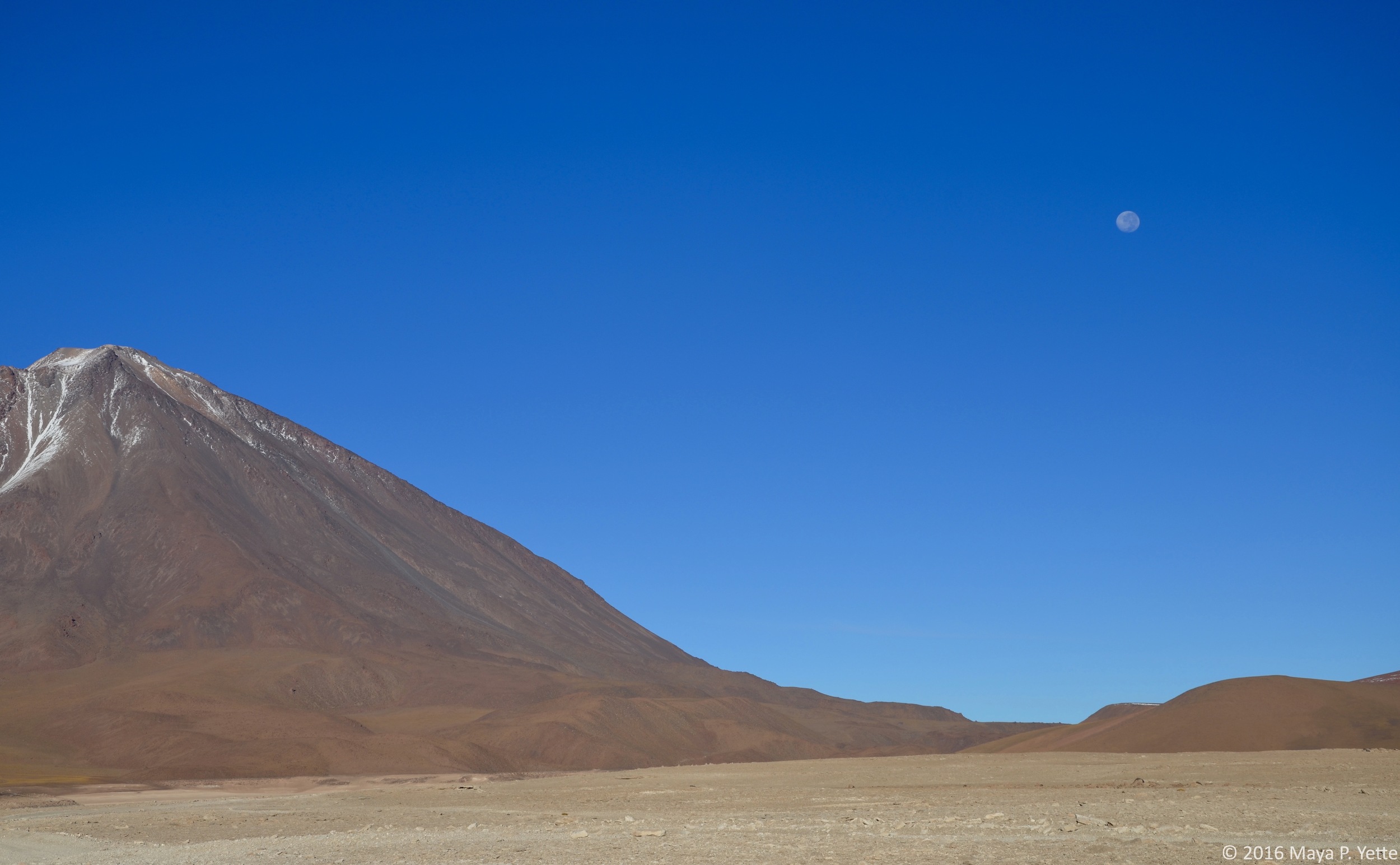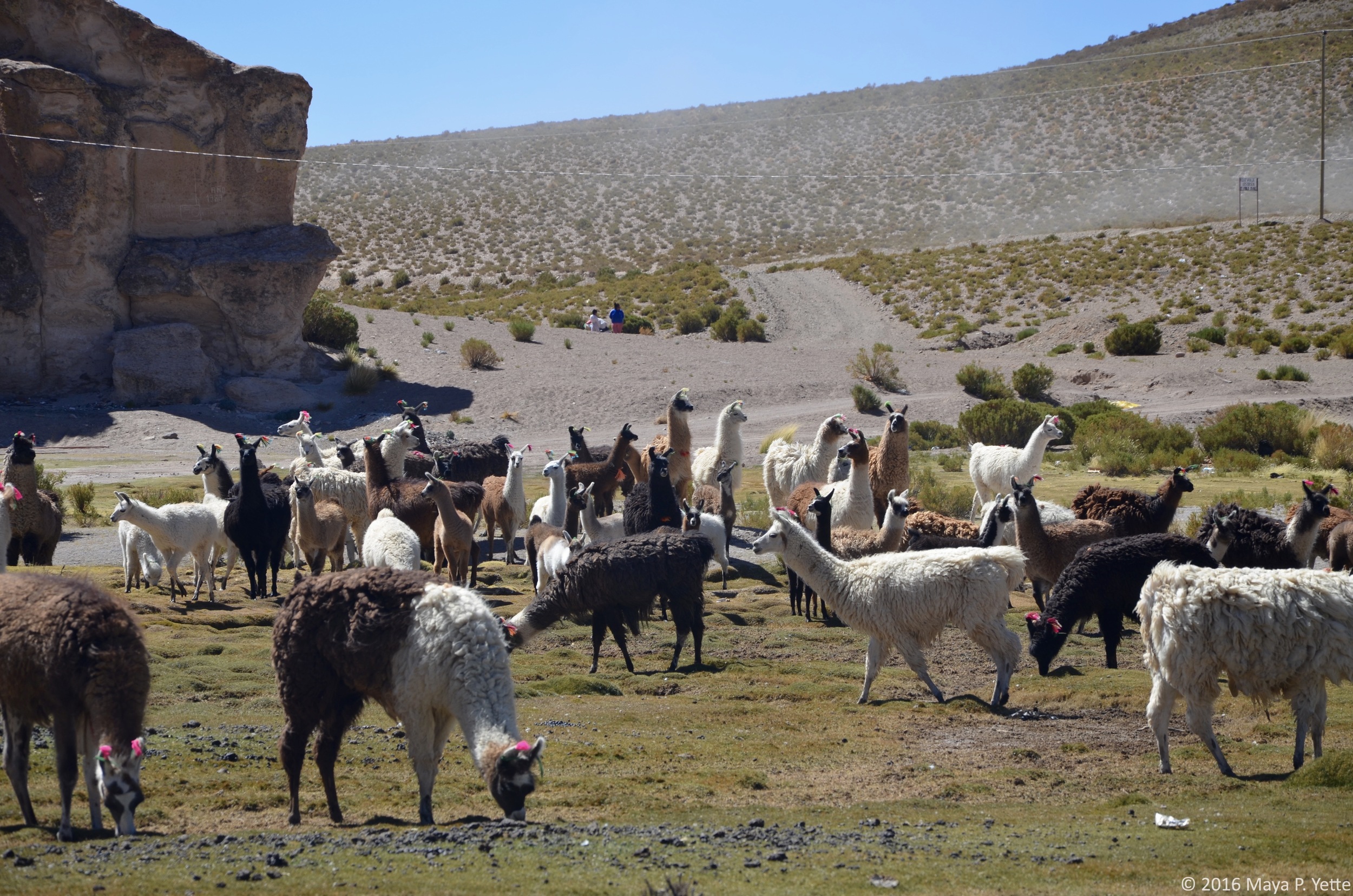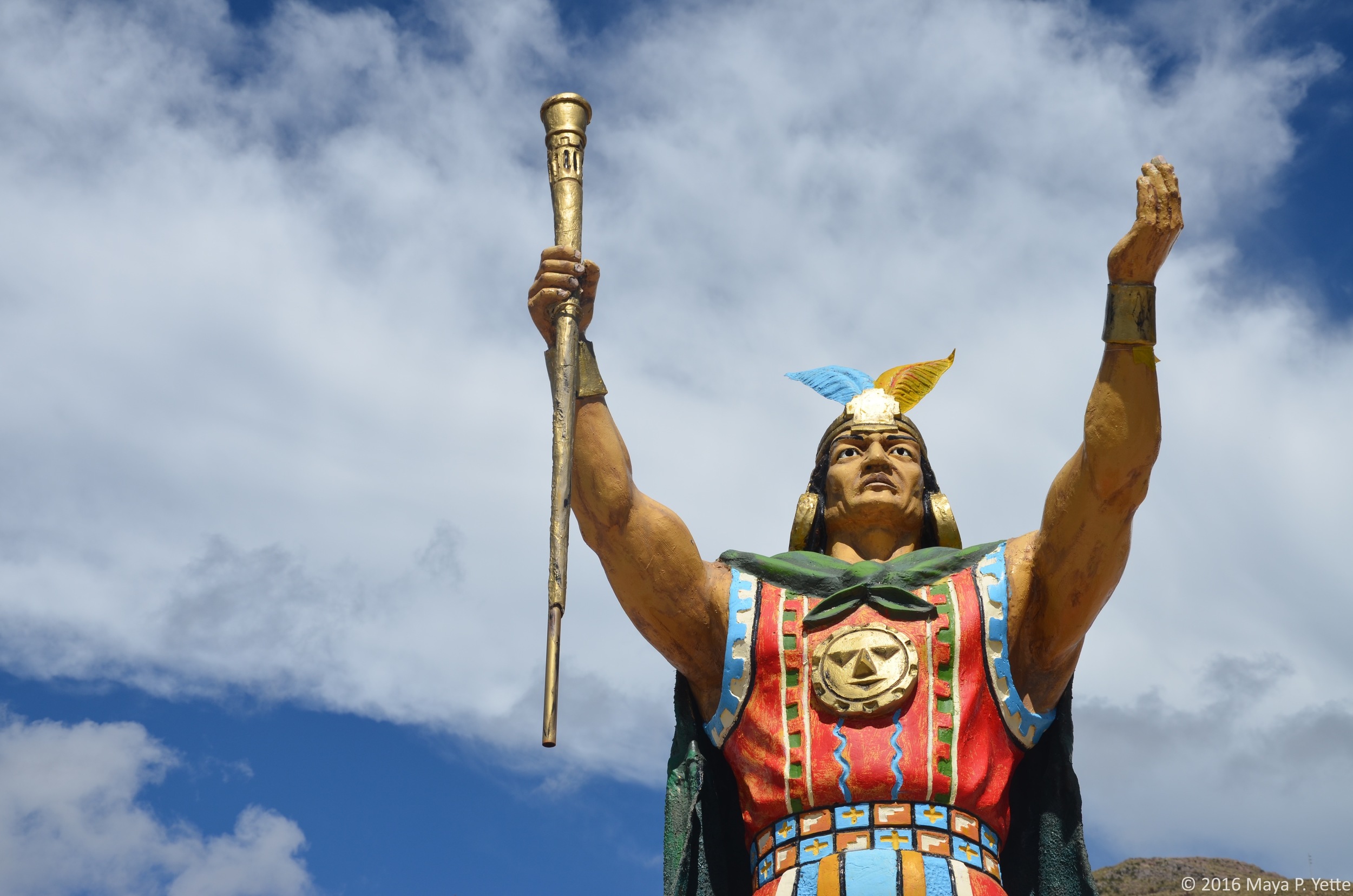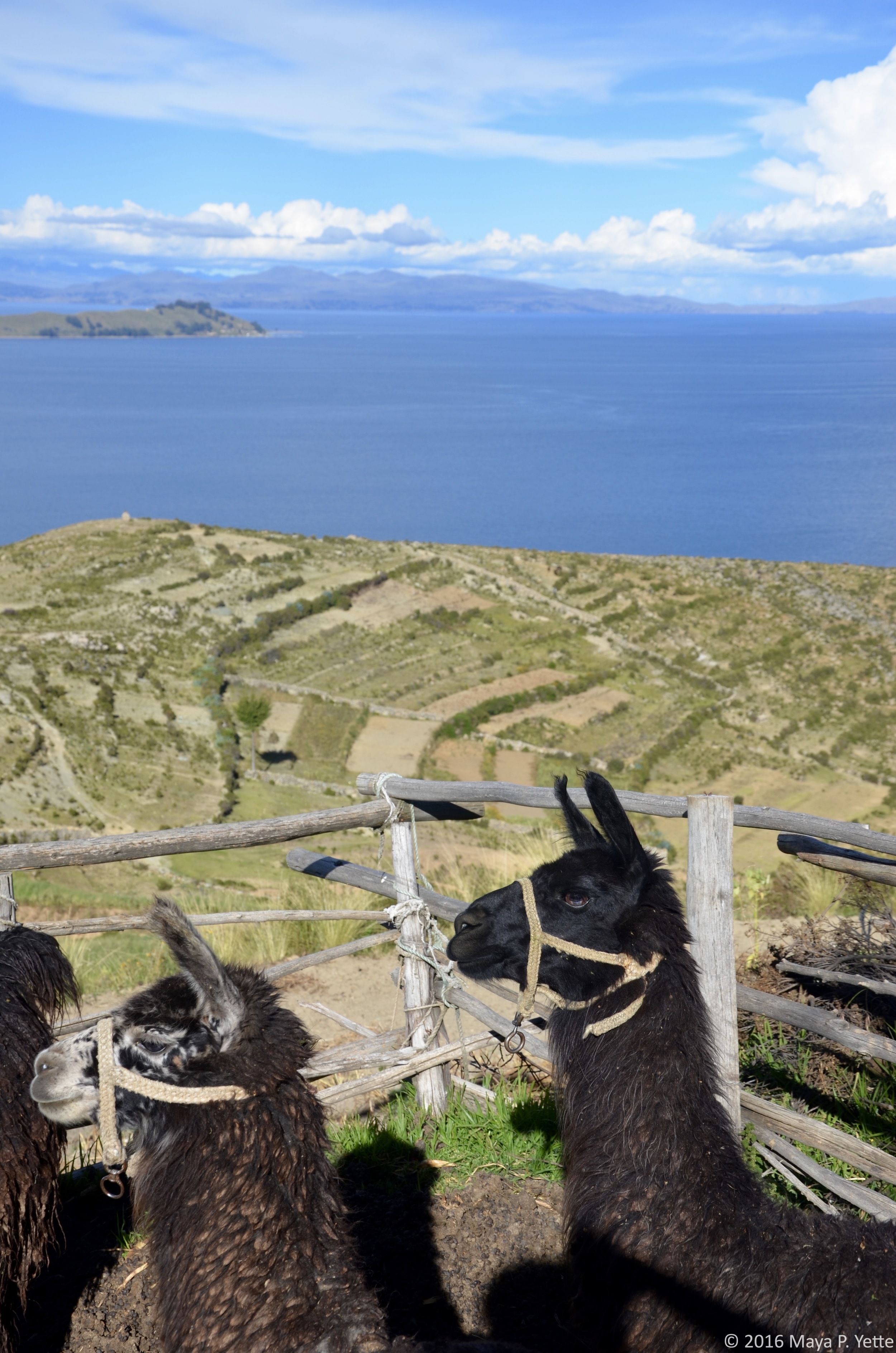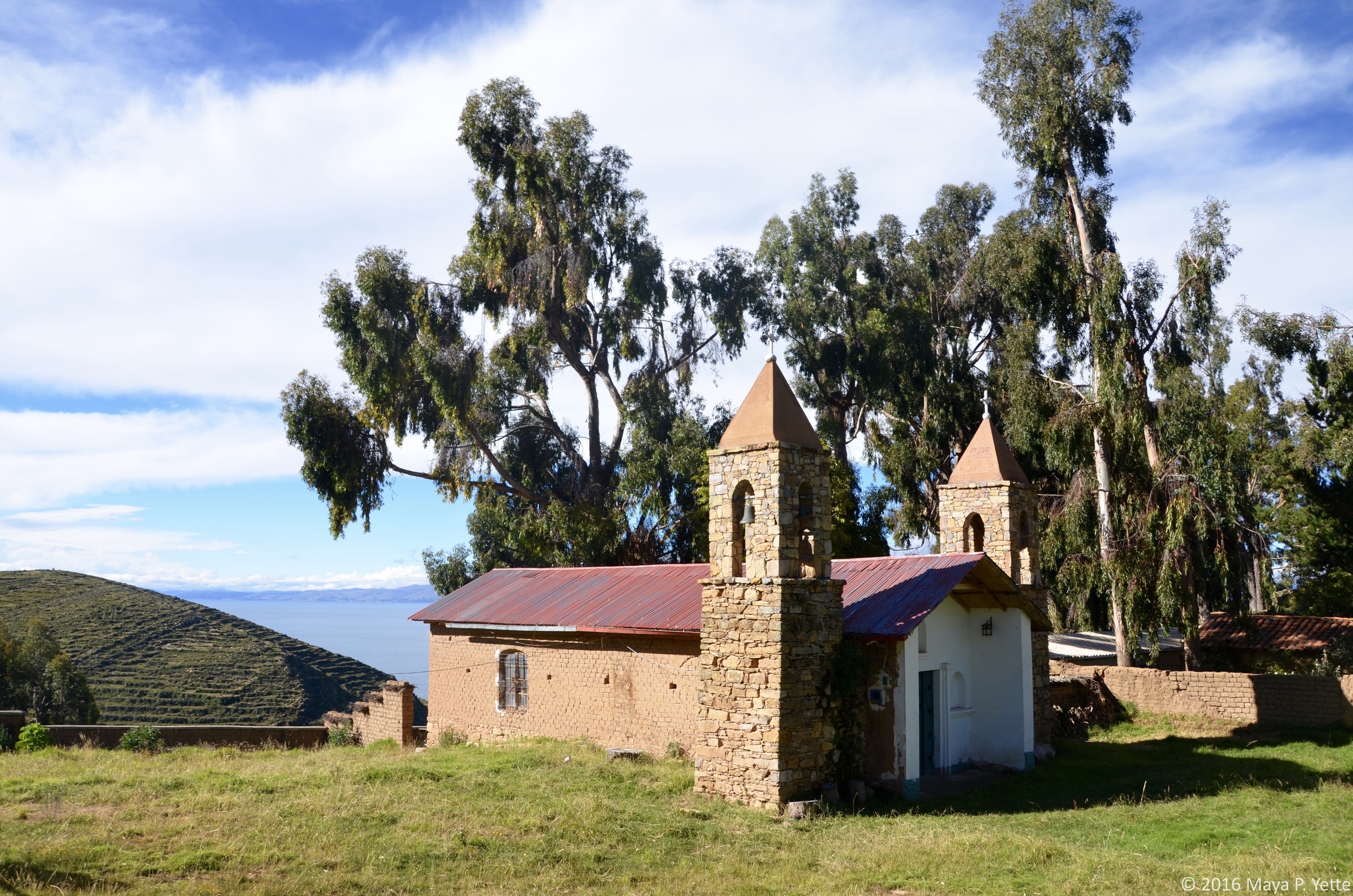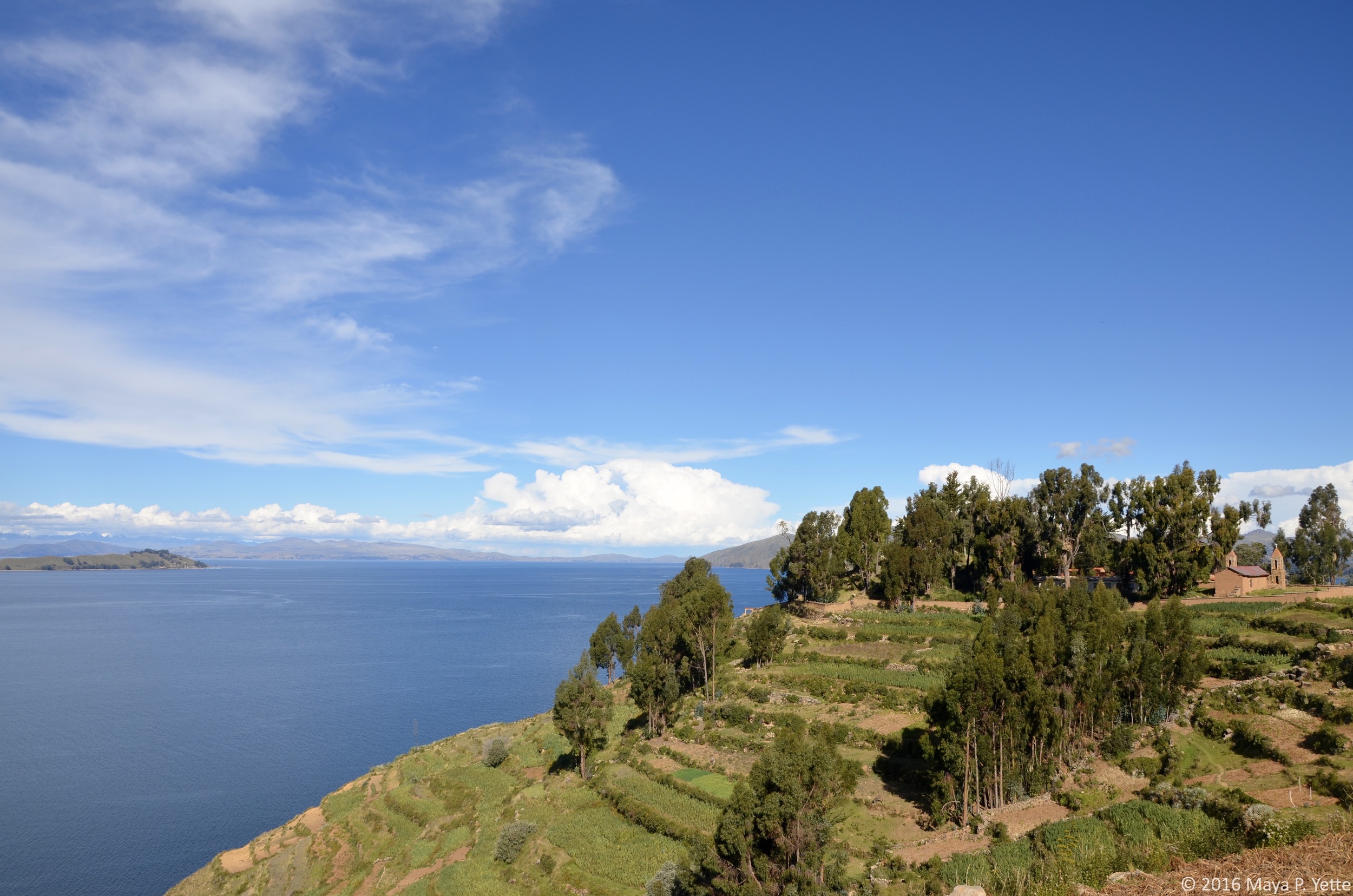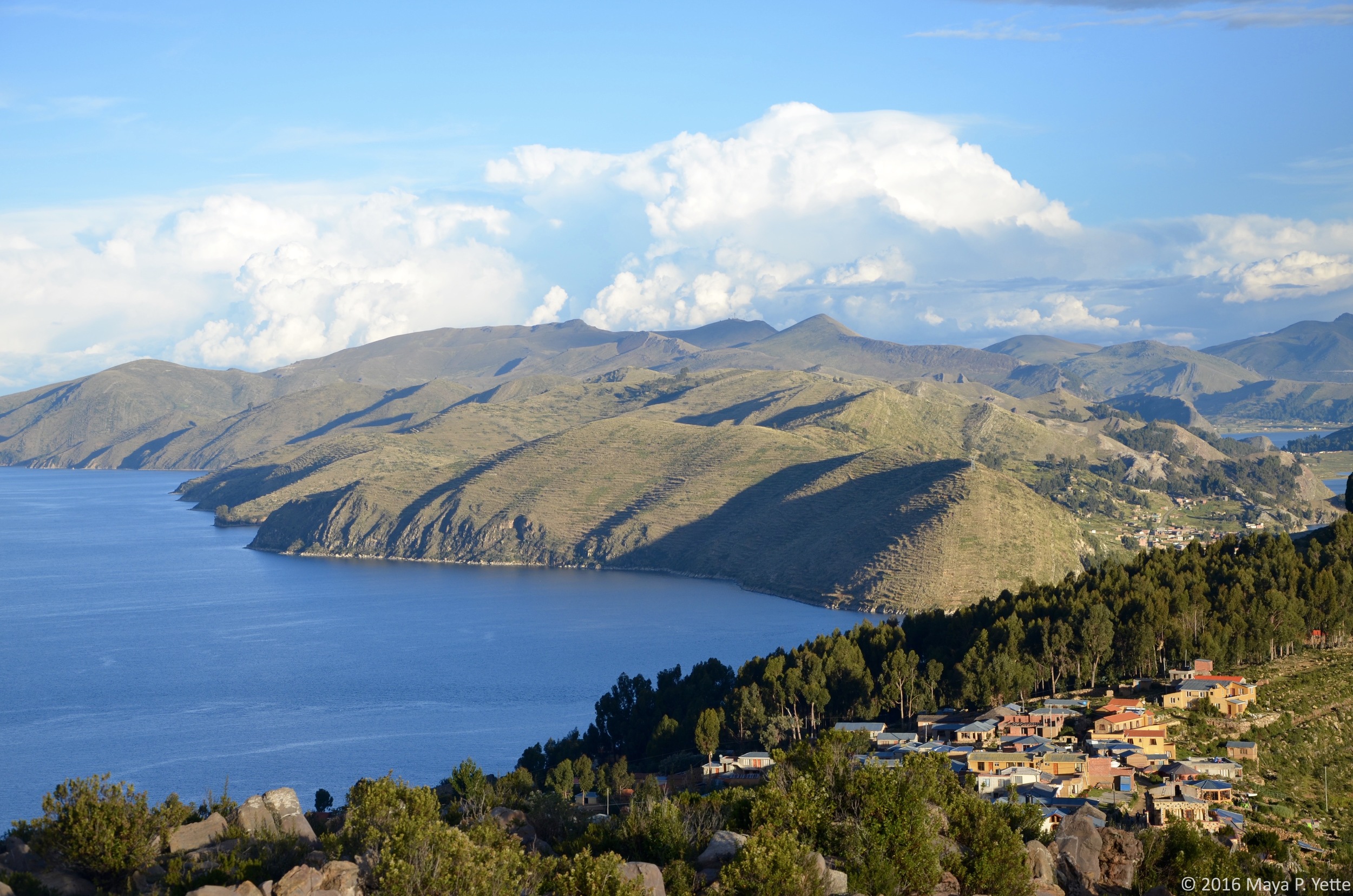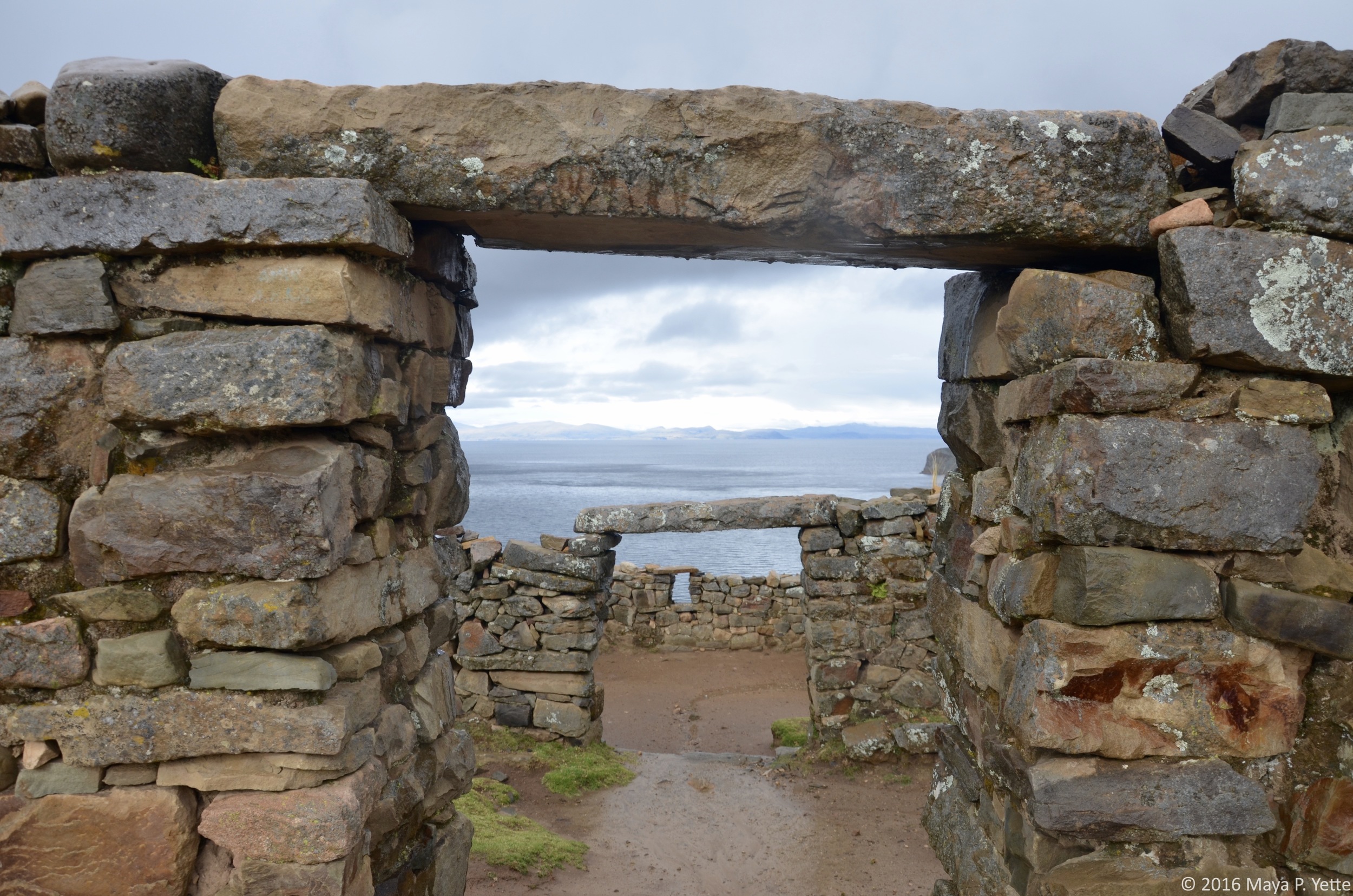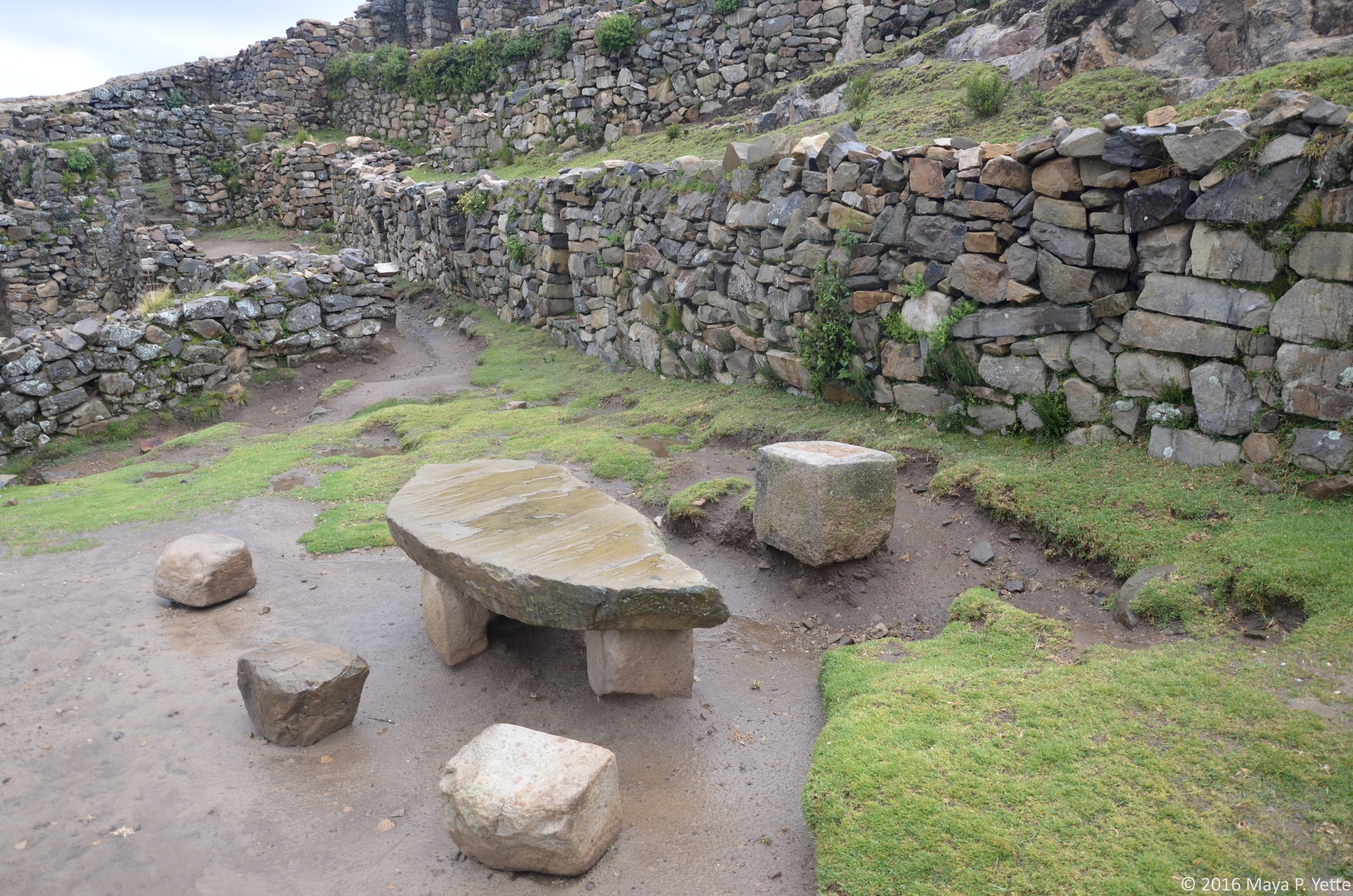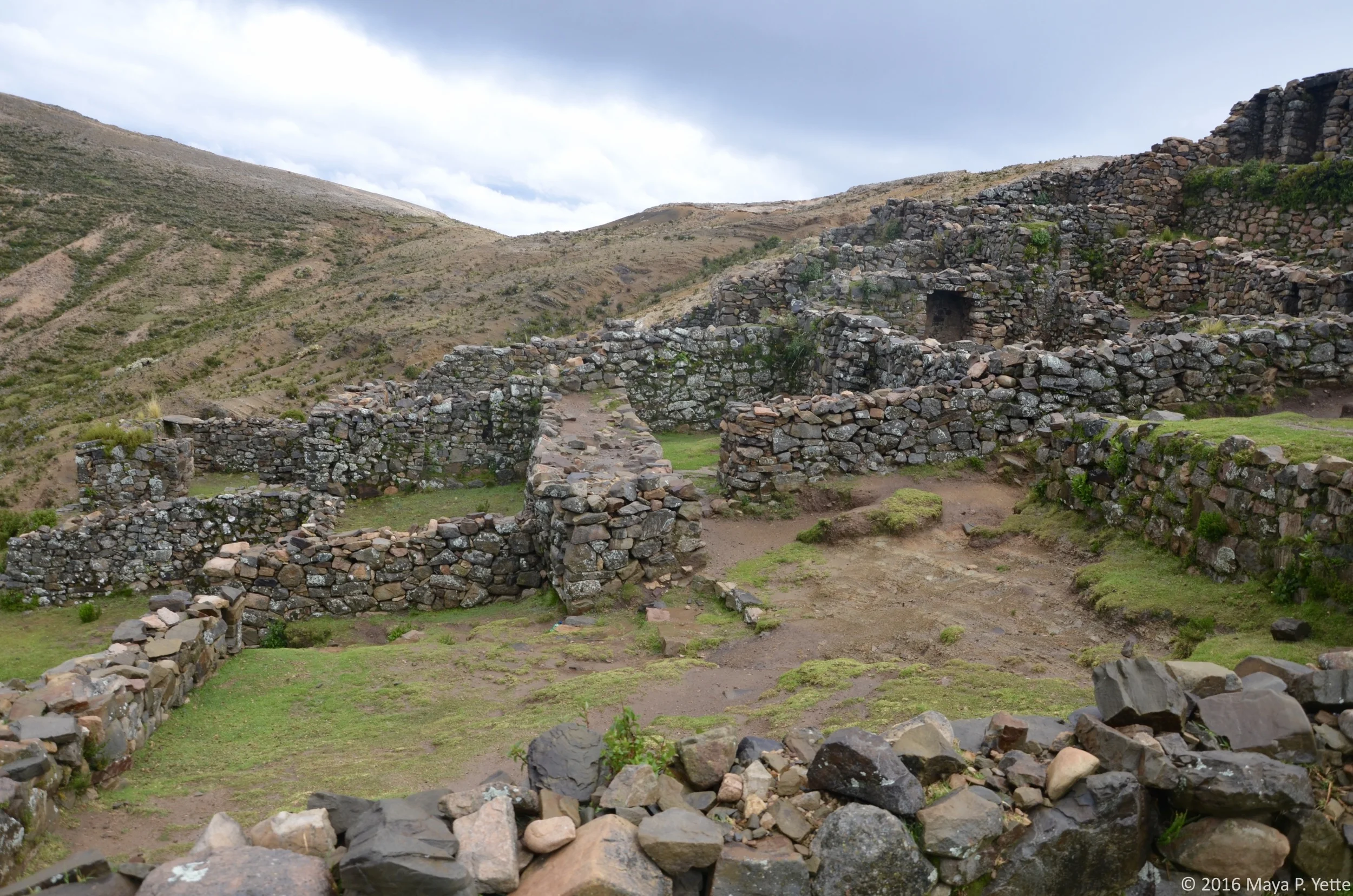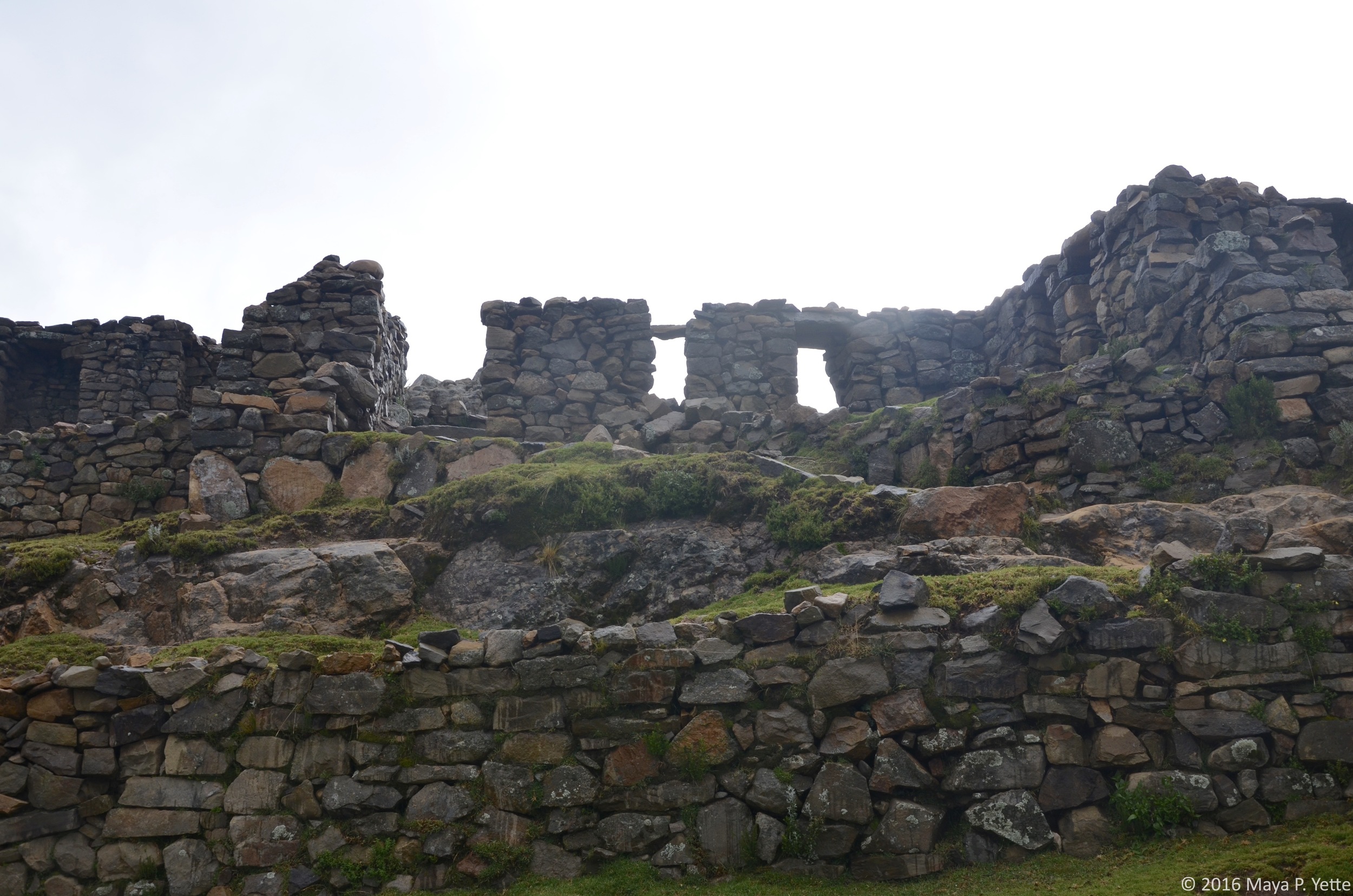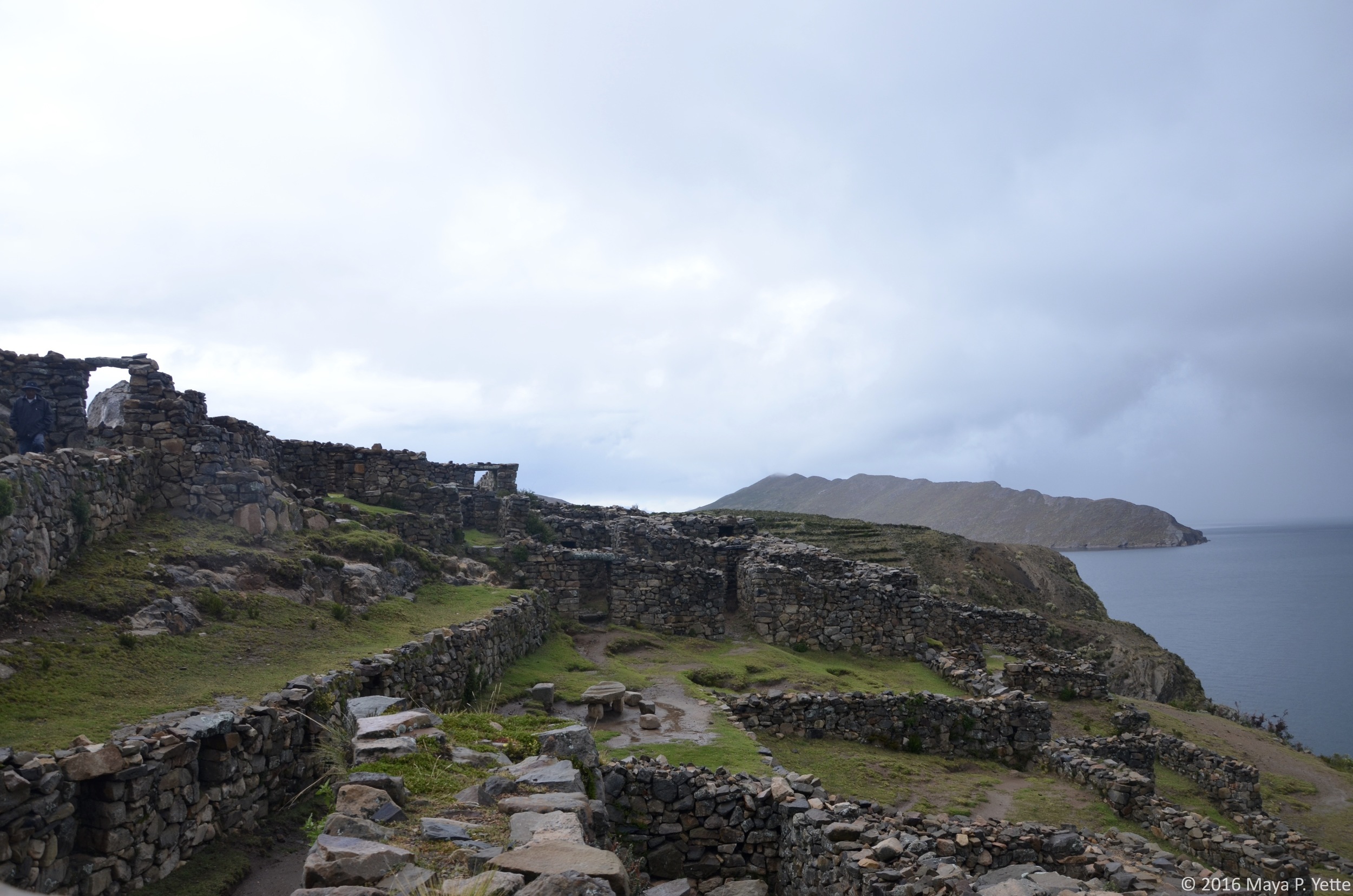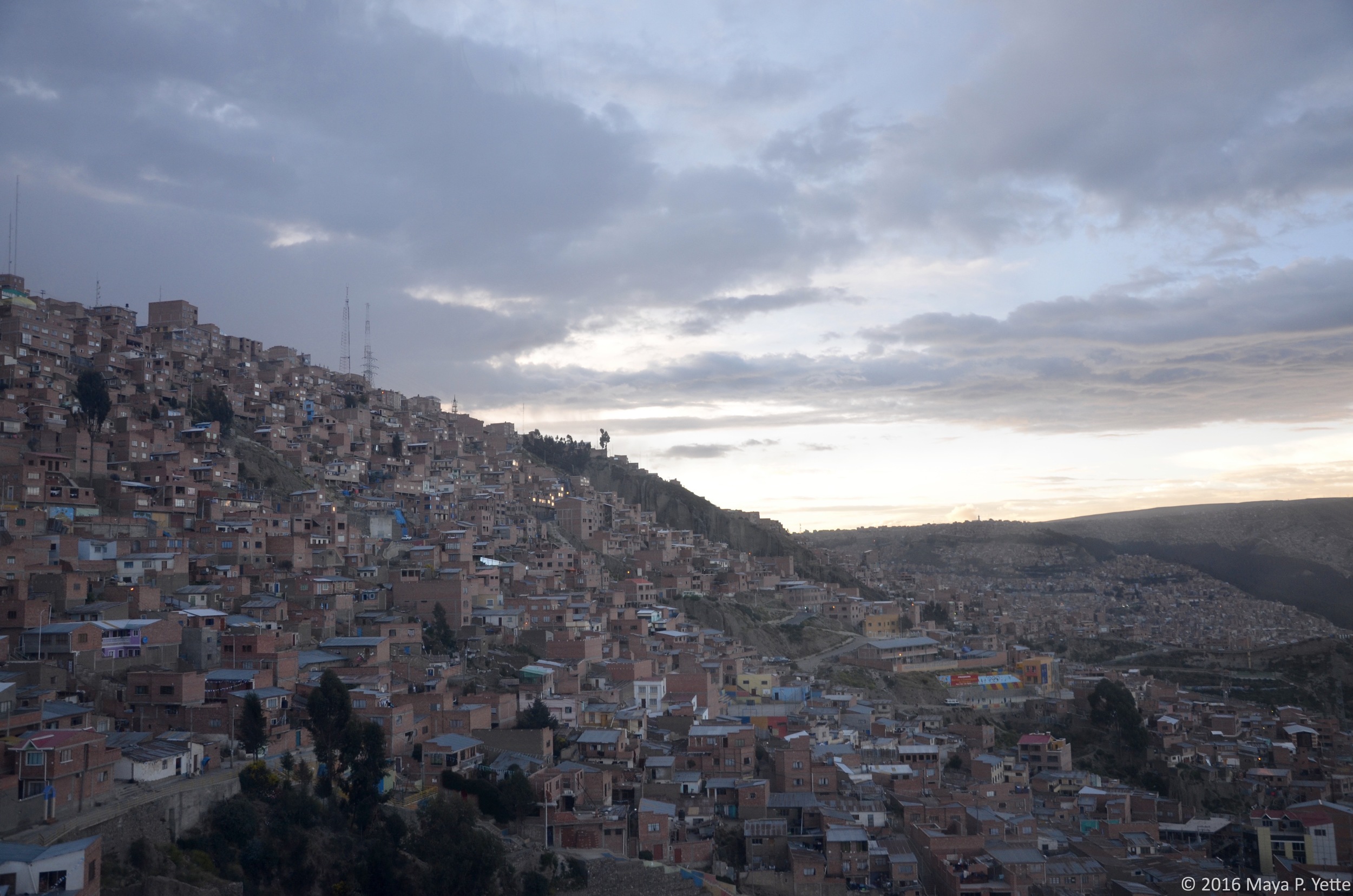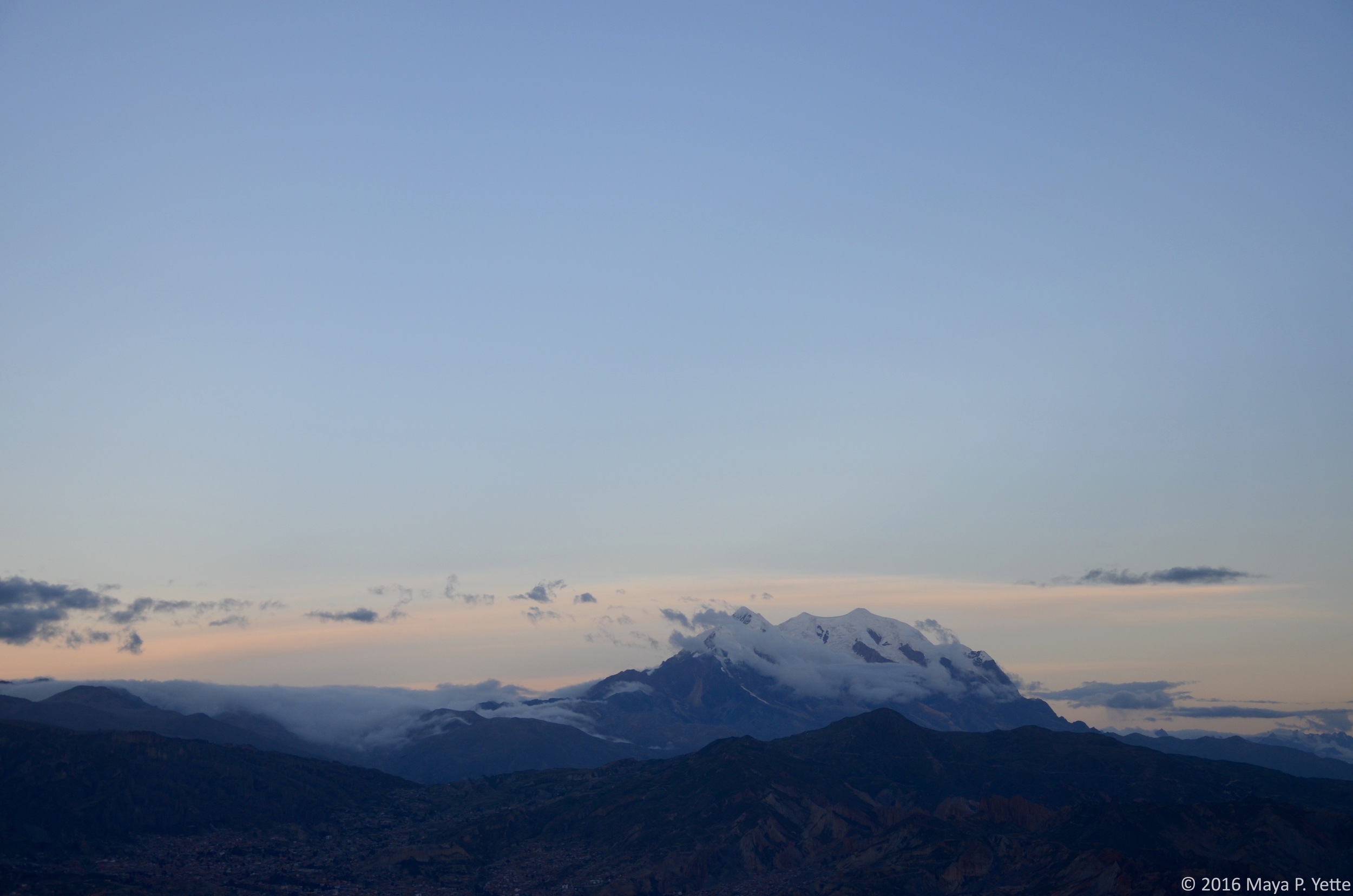One of the few facts I knew about Bolivia before visiting, besides the fact that it sits at an insanely high altitude, is that it is home to the largest salt flats in the world, Salar de Uyuni, which are about 4,000 square miles. A visit to the salt flats was one of the few side trips I knew I had to take this year and it did not disappoint.
Unbeknownst to me was the fact that the southwest region of Bolivia where the salt flats are located, Potosi, is also home to a wide array of other, equally stunning landscapes. In order to see them all, a group of us signed up for a three day, two night tour that took us to some of the furthest reaches of Bolivia.
To get to the city of Uyuni, the jumping off point for the salt flats, we took a 10-hour overnight bus from La Paz (not as bad as it sounds, I promise). Upon arrival in Uyuni, we had breakfast and then met our tour guide, Nadia, and split into three jeeps that would be our refuge over the next few days. Our first stop right outside of Uyuni was a “train graveyard” where trains that were used to transport minerals across British-engineered rail lines to the Pacific during the late 19th and early 20th centuries now sit abandoned.
After climbing through and on top of old, rusted out trains that would certainly not be open as a tourist attraction in the United States, we made our way towards the salt flats. Before we could see this natural wonder, we stopped in the town of Colchani to see a salt processing plant, where people bring the salt they harvest from the flats and process it to sell.
As we left Colchani behind and entered the salt flats, our driver, Freddy, picked up speed and soon all we could see was the flat white expanse spreading out around us. We made a few different stops on the salt flats to observe the different areas. First, on the part of the salt flats closest to Colchani, there are a number of small pyramids of salt that people create to let the water run back into the ground and dry the salt out.
A little deeper into the flats there was an area that was covered in about 2 centimeters of water, which created a slight mirror effect. We stopped here to walk around and have lunch: llama steak and quinoa, staples of the Bolivian diet.
After lunch, we drove to see the first salt hotel (the bricks of the building are made of salt), which has since been closed because of the destruction it began to cause to the surrounding environment.
After driving even deeper into the salt flats, we stopped in a seemingly never ending expanse of white to take the silly, perspective bending photos that the salt flats are known for -- llama props were a crowd favorite.
My favorite part of the day, however, was arriving at Isla Incahuasi, an “island” in the middle of the salt flats that’s covered in cacti. The contrast was unexpected and beautiful -- from the top of the island you can really imagine that the salt flats were once a lake.
As we drove out of the salt flats, we stopped to take in the sunset before heading to our hostel.
On our second day in the southwest region, with the salt flats behind us, we set out to see what else Bolivia had to offer. From pink lakes with flamingos to volcanoes everywhere we looked and more, it did not disappoint. For large parts of the day as we drove through vast expanses where it seemed like the only inhabitants were a few llamas or vicuñas, I felt like we must be on Mars, or at least what I imagine Mars to look like, with red, rocky land spreading out all around us.
On our final day of the tour, we set out before sunrise to drive up into the mountains 5,000 meters above sea level. We saw geysers of smoke and bubbling sulfur all before the sun reached its peak in the sky. Because of the altitude it was also colder than any of us were prepared for and we quickly retreated to the relative warmth and comfort of Freddy’s jeep. After driving to view another lake and volcano combo, we drove to what is known as the Desierto de Dali (Dali’s Desert), for its similarities to one of the deserts in Dali’s famous painting (he is not known to have ever visited Bolivia, making the similarity all the more striking). Despite the frigid temperatures, some of us also braved the cold to enjoy some time in a natural hot springs. After drying off, we stopped in a little town called Mallku Villa Mar for lunch and walked among a field full of llamas before beginning the drive back to Uyuni. From there, I and a few others opted to catch a one hour flight back to La Paz instead of taking another overnight bus – so worth it!





